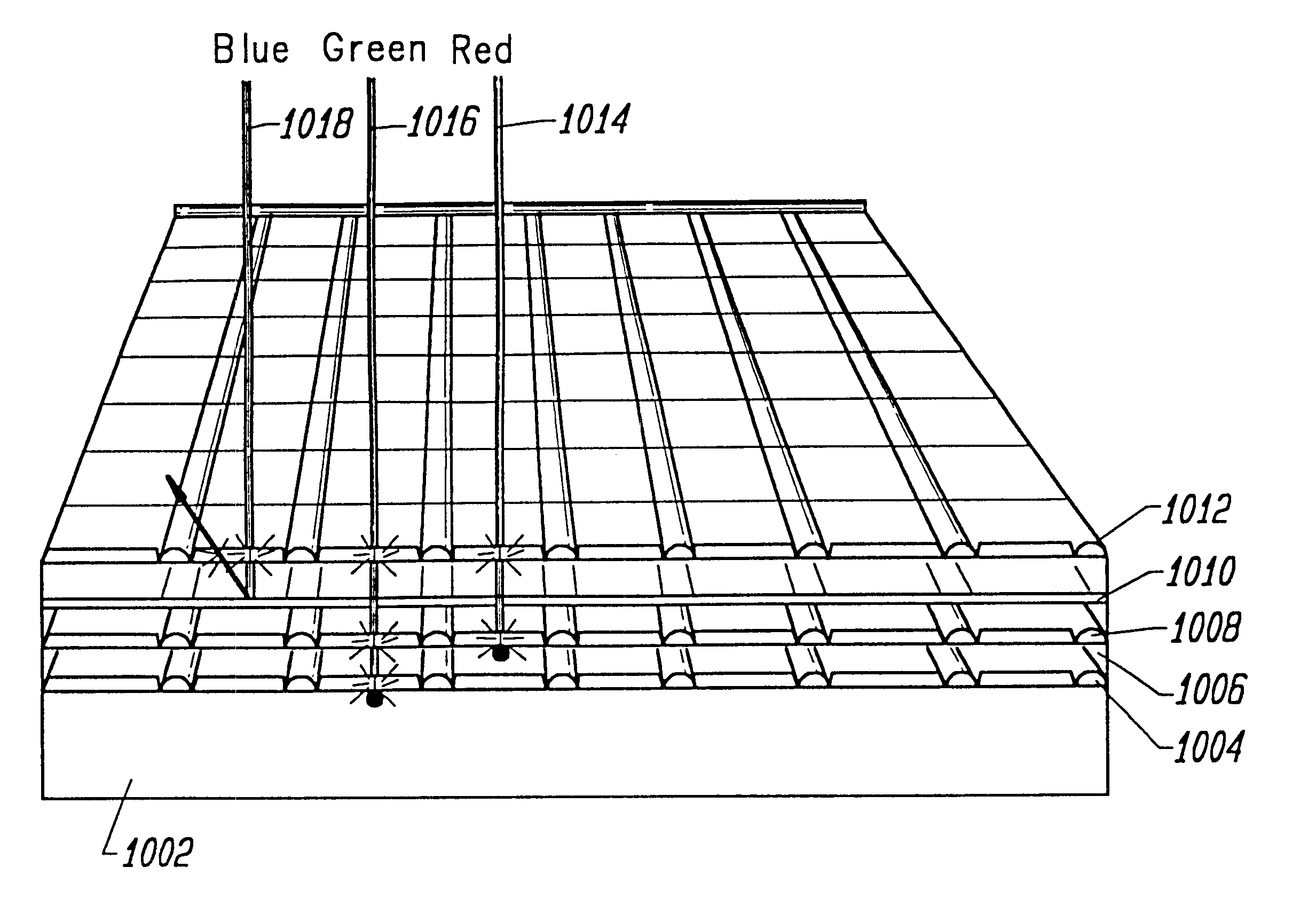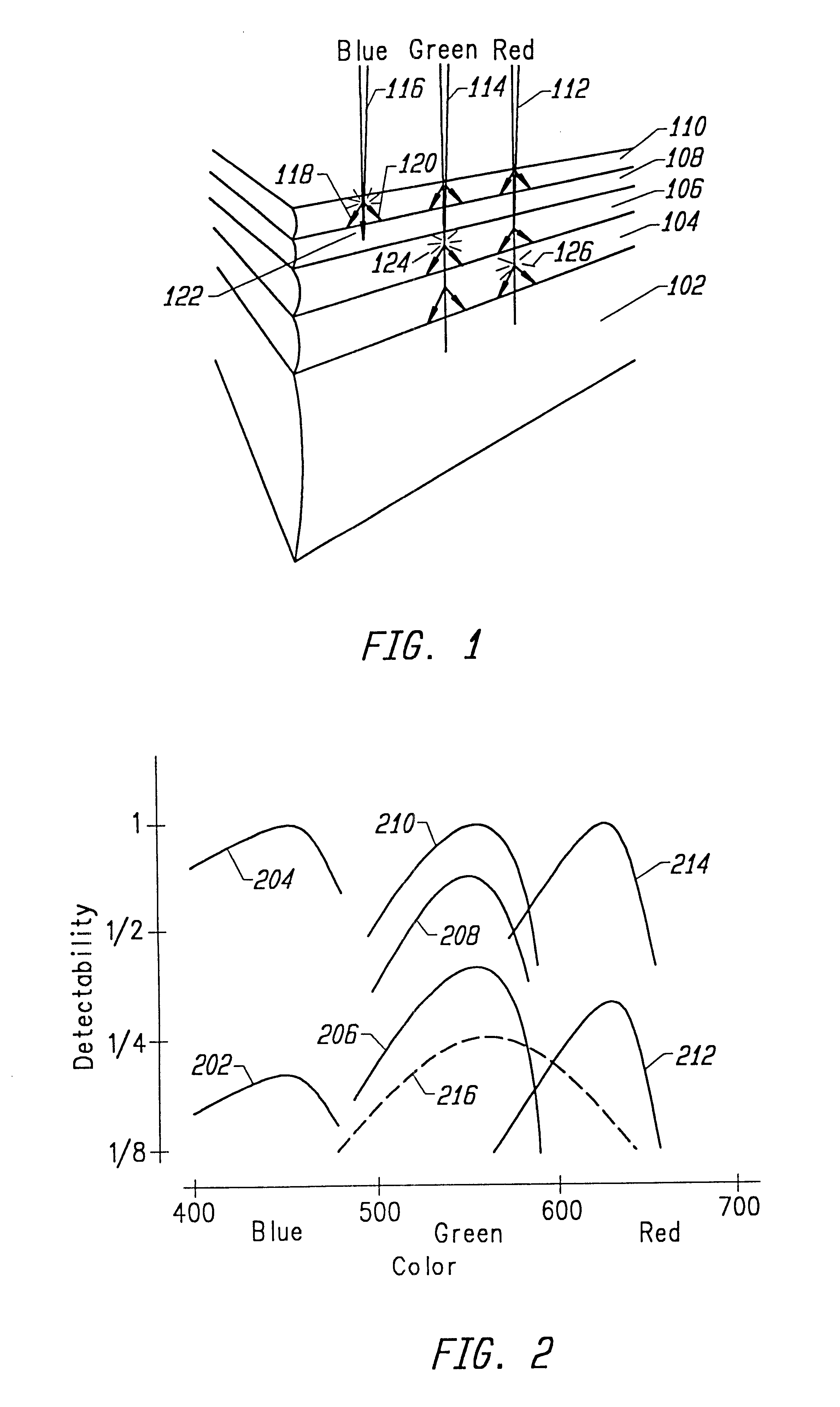Luminance-priority electronic color image sensor
a color image sensor, electronic technology, applied in the direction of optical radiation measurement, instruments, spectrometry/spectrophotometry/monochromators, etc., can solve the problems of no way to obtain latitude advantage, limited color film operation in the rgb color space, and difficult kodachrome developmen
- Summary
- Abstract
- Description
- Claims
- Application Information
AI Technical Summary
Problems solved by technology
Method used
Image
Examples
Embodiment Construction
Referring now to FIG. 1, the construction of prior-art color film is described. Construction begins with a structural base 102. Sensitive layers containing a silver halide emulsion are placed in thin films over this base. These layers contain silver halide with a native sensitivity to blue light. In addition, some of these layers have added to them a sensitizing dye to extend the sensitivity to other colors. First, a red and blue sensitive layer 104 is laid in a thin film over the base 102. A green and blue sensitive layer 106 is placed over this. Then a yellow filter layer 108 is placed to absorb blue light. Finally a blue sensitive layer 110 is placed on the top. Other layers not relevant to this discussion are omitted for clarity; for example, a layer on the opposite side of the base 102 sometimes is added to reduce halation and allow retouching, an overcoat protects all the layers, and furthermore each color sensitive layer is typically subdivided into three sublayers of differe...
PUM
 Login to View More
Login to View More Abstract
Description
Claims
Application Information
 Login to View More
Login to View More - R&D
- Intellectual Property
- Life Sciences
- Materials
- Tech Scout
- Unparalleled Data Quality
- Higher Quality Content
- 60% Fewer Hallucinations
Browse by: Latest US Patents, China's latest patents, Technical Efficacy Thesaurus, Application Domain, Technology Topic, Popular Technical Reports.
© 2025 PatSnap. All rights reserved.Legal|Privacy policy|Modern Slavery Act Transparency Statement|Sitemap|About US| Contact US: help@patsnap.com



